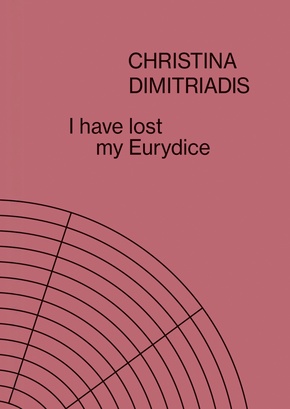| Verlag | Kerber Verlag |
| Auflage | 2025 |
| Seiten | 96 |
| Format | 17 x 1,2 x 24,2 cm |
| Gewicht | 392 g |
| ISBN-10 | 3735610404 |
| ISBN-13 | 9783735610409 |
| Bestell-Nr | 73561040A |
I have lost my Eurydice bietet einen Überblick über das Werk der griechisch-deutschen Künstlerin Christina Dimitriadis und erscheint anlässlich der gleichnamigen Ausstellung in der Schwartzschen Villa, Berlin. Im Fokus stehen die Wanderungen der Künstlerin durch die Ägäis, wo Geschichte, Mythen und wechselnde Kulturen ein einzigartiges maritimes Umfeld geschaffen haben, das seit jeher von Migrationsströmen, Handel und kulturellem Austausch geprägt ist. In ihren Fotografien folgt Dimitriadis den antiken Transportwegen des Marmors und spiegelt in deren Spuren sowohl das menschliche Streben nach Kunstfertigkeit und Glanz wider als auch Themen wie Ausbeutung, Machtgier und Hybris. Die Publikation präsentiert nicht nur die neueste Serie J'ai perdu mon Eurydice von 2021-2025, sondern versteht sich auch als erweiterte kuratorische Plattform zur Ausstellung. Texte von Ewa Majewska, Övül Ö. Durmusoglu und Christine Nippe kontextualisieren die Serie und gewähren wertvolle Einblicke in Dimit riadis' Gesamtwerk.
I have lost my Euridice provides an overview of the work of Greek-German artist Christina Dimitriadis and is being published to accompany the eponymous exhibition at the Schwartzsche Villa, Berlin. It focuses on the artist's walks around the Aegean, where history, myth, and shifting cultures have created a unique maritime environment that has always been heavily influenced by migration, trade, and cultural exchange. Dimitriadis' photographs follow the ancient marble transport routes, reflecting in their traces both humankind's quest for skill and splendor as well as issues such as exploitation, the lust for power, and hubris.The publication presents the newest series J'ai perdu mon Eurydice dating from 2021-2025, but can also be seen as an extended curatorial platform accompanying the exhibition. Texts by Ewa Majewska, Övül Ö. Durmusoglu, and Christine Nippe provide context for the series as well as an invaluable insight into Dimitriadis' oeuvre.

